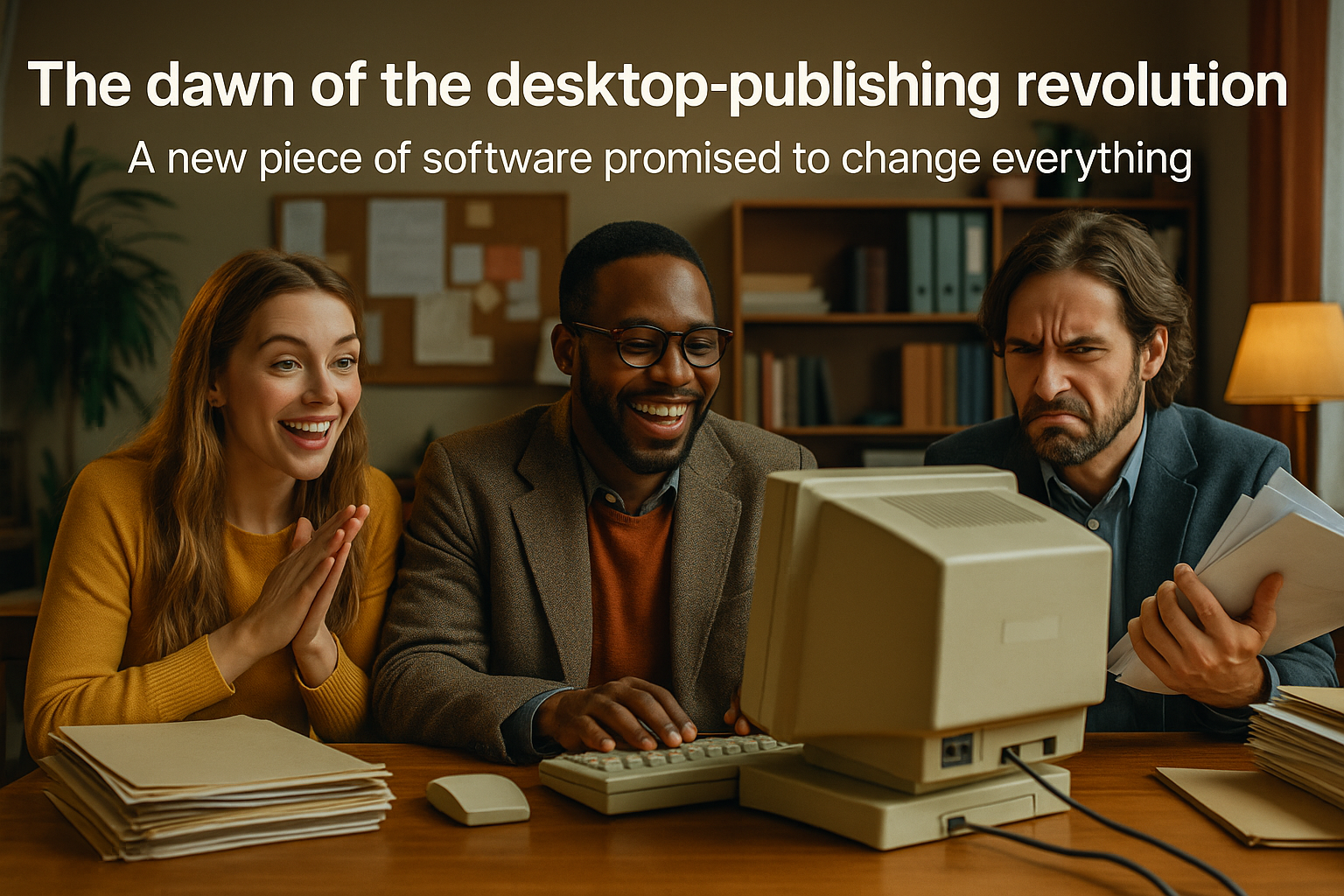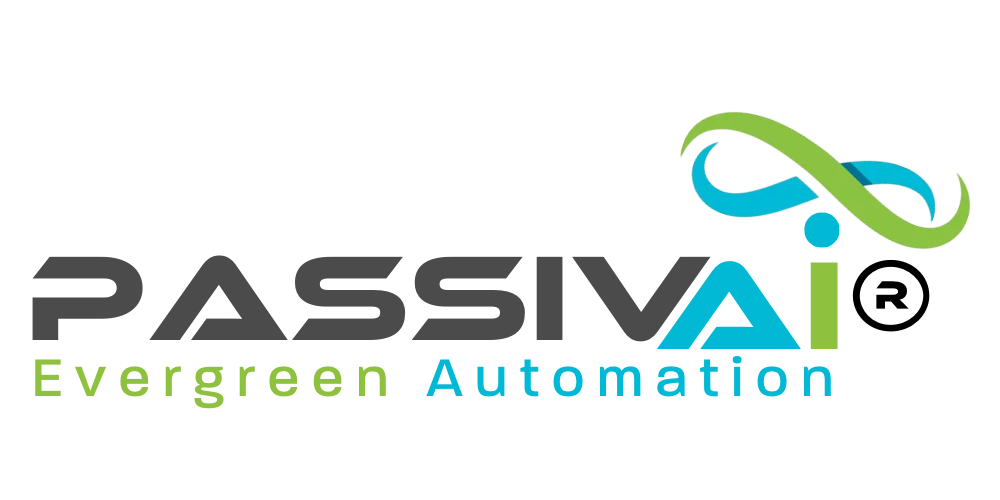Avoid Failing AI: Future-Proof Your Tech Stack
(And Other Tales of Digital Evolution)

|
Date published: 10th November 2025 |
 |
I remember the glorious dawn of the desktop-publishing revolution. Every week, it seemed, a new piece of software promised to change everything.
We bought into the hype, invested a small fortune, and spent months learning the intricacies of a programme, only for it to be swallowed whole by a bigger fish or simply fizzle out, leaving us with useless files and a rather bitter taste.
Does that feeling sound familiar?

 |
The current AI landscape feels remarkably similar, doesn’t it? It’s a dizzying gold rush of shiny new tools, each screaming that it’s the one indispensable solution for your business. The pressure to keep up is immense, but so is the quiet, nagging fear in the back of your mind: which of these subscriptions will be money down the drain? |
Which of these failing AI tools will be a ghost in my machine in a year’s time?
Thankfully, this isn’t another list of “Top 10 AI Tools”. Frankly, those are part of the problem.
Instead, you and I are going to take a step back.
Together, we’ll dissect the warning signs and learn the principles to distinguish a robust, long-term partner from a fleeting tech fad.
This is about building an intelligent tech stack, not just an artificial one.
The Peril of the One-Trick Pony: Why Hyper-Specific AI Tools Are a Risky Bet
Let’s be honest, the temptation is powerful.
You have a very specific, irritating little problem – say, writing witty captions for your social media posts in a particular brand voice.
Along comes a snazzy AI tool that does precisely that, and only that, for £20 a month. It feels like a perfect fit, a bespoke solution.
But this is the classic one-trick pony, and it’s one of the most common profiles of discontinued AI software.
Many of these tools are little more than a clever interface built on top of a larger, more powerful AI model like those from OpenAI or Google.
They’ve carved out one tiny function and built a business around it.
The fatal flaw is that the giants they rely on are constantly expanding their own capabilities.
Yesterday’s standalone “AI caption writer” is tomorrow’s free, built-in feature of Microsoft 365 Copilot, Google Workspace, or even ChatGPT itself.
Suddenly your £20-a-month specialist is redundant.

Value tip:
Before you subscribe, perform the Platform Test...
Is it plausible that Google, Microsoft, Adobe, or my CRM provider will add this exact feature to their platform in the next 12–18 months?
If the answer is anything other than a firm no, proceed with extreme caution.
Spotting the Data Cul-de-Sac: Which AI Tools Will Disappear Next?

A truly valuable tool makes your entire business ecosystem smarter; a failing one creates a lonely island of data.
Imagine you’ve found a brilliant AI tool for analysing customer feedback from surveys. It generates insightful reports and beautiful charts.
The problem? It doesn’t connect to anything.
To get the data in, you manually upload a spreadsheet. To use the insights, you copy and paste them into your CRM, your project-management board, and your marketing-automation platform.
That’s a data cul-de-sac.
In the short term it feels minor; in the long term it’s fatal.
The future of business efficiency is integration.
An AI tool that cannot integrate via a robust API or pre-built connections to major platforms like HubSpot, Salesforce, or Zapier is a relic from a bygone era.
It adds friction, creates silos and actively works against the unified workflow you’re trying to build.

Value tip: During a free trial, ignore the flashy features.
Go straight to the Integrations or API section of their website.
If it’s hard to find, poorly documented or looks deserted, that tells you everything you need to know about their long-term vision.
Close the tab.
Beyond the Hype: Is Your “Next-Gen” AI a Business or Just a Balance Sheet?
The tech world is awash with venture capital.
This has fuelled incredible innovation, but it has also created a generation of VC Darlings – companies that are brilliant at raising money but hopeless at making it.
These are the failing AI tools that burn brightest before they burn out.
Their marketing is slick, their UI is gorgeous, and their Product Hunt launches are met with applause.
But underneath the bonnet, there’s no sustainable business model.
They burn through investor cash with pricing that’s suspiciously low.
Their goal isn’t to serve you for years; it’s to hit a high user count and get acquired.
When funding dries up, they vanish – logins fail, support dies, and you’re left stranded.
To avoid this, think like an investor.
Does their pricing make sense?
Do they solve a genuine business problem, or are they a “nice-to-have” toy?
Look for evidence of a real business, not just a well-funded project.

Value tip:
Hunt for the boring case studies.
Skip the trendy start-ups and find examples of manufacturers, law firms or retailers using the product successfully.
If they can prove value to a 50-year-old company, they’ll likely still be around in five.
TL;DR
Building an Intelligent, Not Just Artificial, Tech Stack

The goal isn’t to become a psychic who predicts failure.
It’s to develop a strategic filter that protects your time, money and sanity.
Before you invest in any new AI, ask yourself:
- Is it a one-trick pony destined for redundancy?
- Is it a data cul-de-sac that creates more work than it saves?
- Is it a VC darling with no plan for profit?
By focusing on these principles – multi-faceted utility, deep integration, and a sustainable business model – you’ll move beyond the hype and build a stack that’s powerful, efficient and future-proof.
What’s Next?
Ready to take the next step without melting your brain in the process?
Trade in overwhelm for clarity with the PassivAi® CoreMagic™ Blueprint.
This is your strategic compass for defining exactly how to market to your niche audience. From irresistible elevator pitches to scroll-stopping digital business cards, this tool helps you nail your message so you can automate like a pro and sell like one too.


